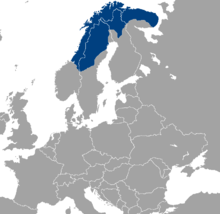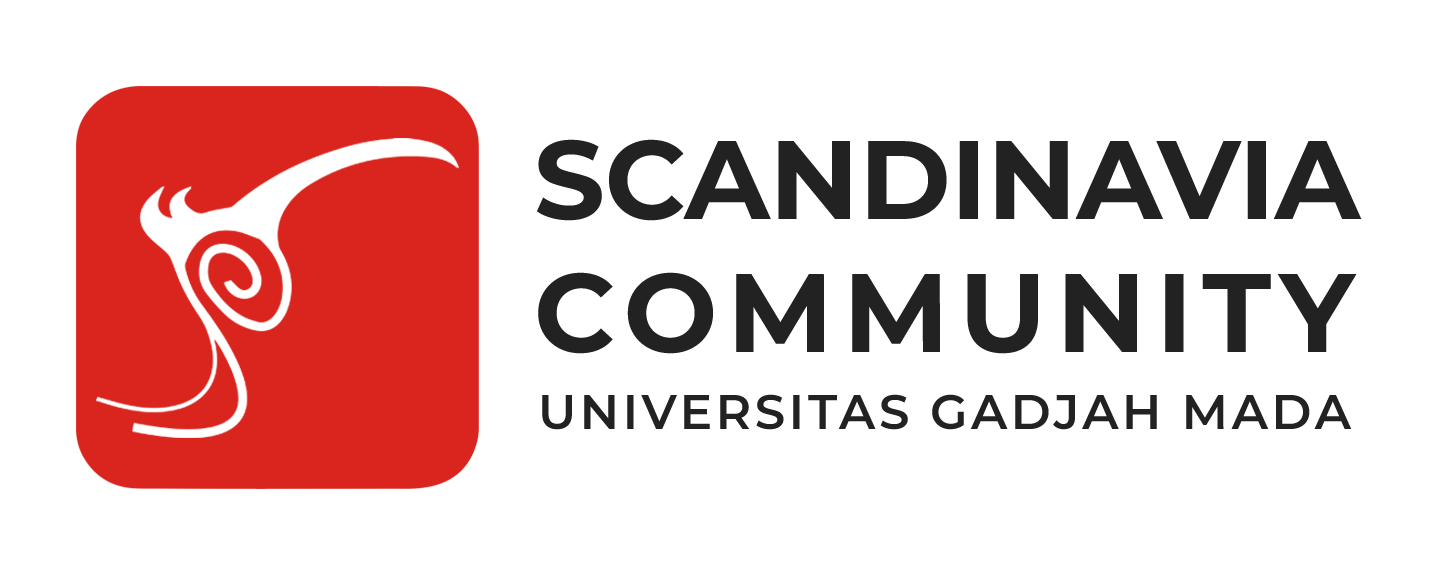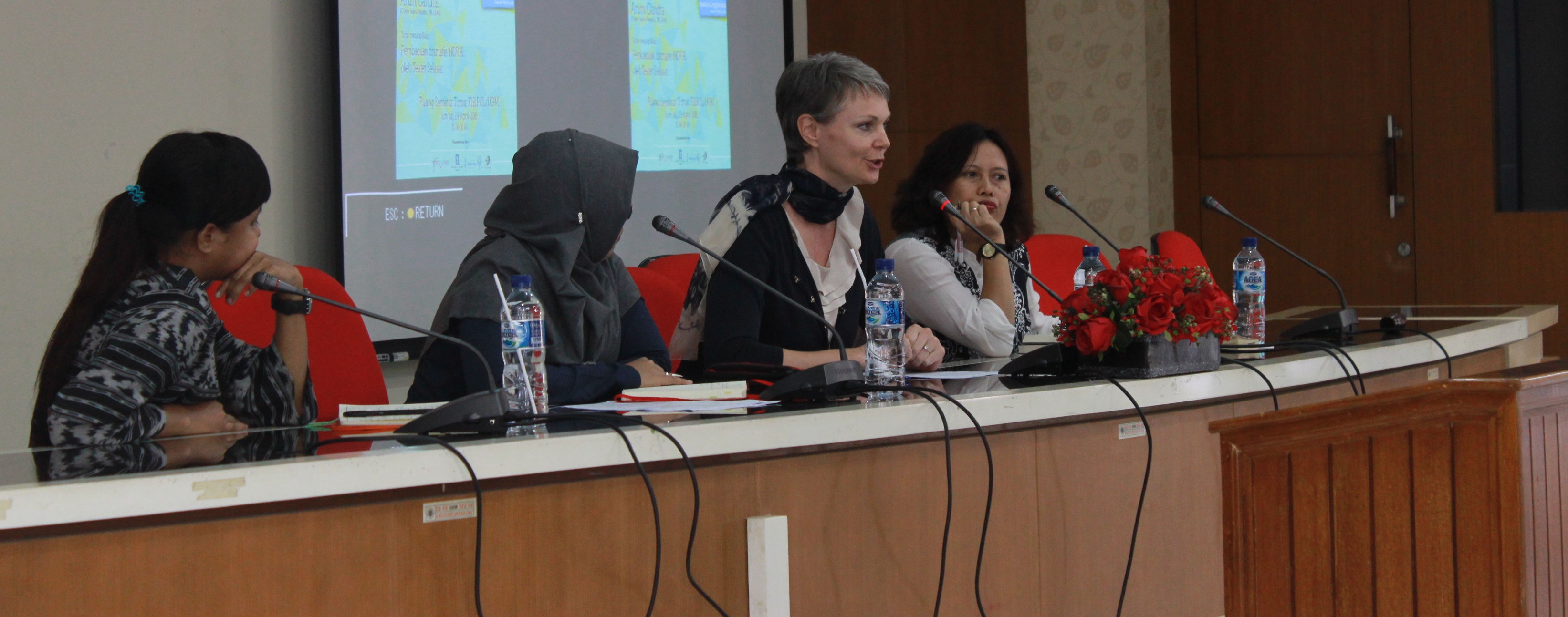This essay is a collaboration between the Department of INKA Komahi UGM and Forskning Scanity UGM. This essay is also published on the Inka KOMAHI Medium.
The Sami people are indigenous people who inhabit Lapland, the northern regions of Norway, Sweden, Finland, and the Kola Peninsula of Russia. The tribe is the only Indigenous people recognized in Europe and lives semi-nomadically around the Arctic Circle (Lowry, 2024). The Sami people do not have a sovereign geographical territory and live in the territory of several Scandinavian countries, with a large population in Sweden. They are also part of industrial, agricultural, and fishery activities and even participate in governmental activities (Sutherland, 2016). Therefore, the Sami people rely on nature, especially forests, to live. However, the Sami people are one of the most vulnerable tribes today. They face various ecosystem problems due to mining and logging projects. These activities have disrupted their way of survival and cultural heritage. Until today, the Sami people are vulnerable indigenous people and still face the aggressive activities of the government and private companies who are very hegemonic.

The Sami people’s struggle can be dissected through the concept of Plural Ecology which emphasizes the idea of pluralization of ecologies and how it intersects with hegemony and plurality. Guido Sprenger and Kristina Großmann introduced this theory to dissect Southeast Asia’s political and ontological environment. On the other hand, Scandinavian countries share the same characteristics in their multiplicity of ecological practices that need to be exposed worldwide, similar to Southeast Asia. Hence, the emphasis on plural ecology by the Sami people in Scandinavia. Plural ecology highlights the idea of hegemony and plurality, arising from diverging ontologies, epistemologies, cosmology, politics, and economies within and among social formations (Sprenger & Großmann, 2018). Hence, Sweden’s development policies must uphold the concept of Plural Ecology to create a welfare society for the Sami.
The Sami people face disruption from multinational companies oriented towards the timber and mining industries. Although Sweden has always claimed that its logging system is sustainable, it is still worrying. The Swedish Forestry Model continues to drive Sweden’s old-growth forests towards extinction and disrupts the balance of the ecosystem (Time, 2024). For the Sami people, this disrupts not only their ecosystem but also their ‘way’ of life, in which the theory mentioned that non-human animals, plants, and spirits are supposed to be included in the system, which also could not be comprehended by modern epistemologies. They can no longer maintain their cultures and cultural heritage that are closely related to nature, in which culture is not mere but must be integrated into a relationship with institutions. For example, the Sami people have a culture of raising reindeer that has survived the Ice Age (Time, 2024). However, this culture has been disrupted by logging and mining, which have occurred intensively in the last few decades while they were supposed to be incorporated into a specific cultural configuration (Sprenger & Großmann, 2018).

Indeed, industrial and mining activities are developing intensively in Sweden and several other Scandinavian countries. In the first quarter of 2024, capital flows in Sweden entered rapidly and continued to increase. Several global companies, such as Investor AB, with a value of 76.5 billion dollars, occupy some of the most prominent investment positions, followed by EQT, Industrivarden, and several other companies (Statista, 2024). This indicates the need for high-volume logging and other activities. This need is inseparable from the various incentives from the Swedish government to create regulations that are more friendly to foreign investment in the last two decades. The Swedish government has also enacted the Sweden FDI Act, which prevents foreign investment that could harm national security (Vinge, 2024). However, this investment policy only starts logging and mining. This occured because local investors still control various industrial and forest areas. Moreover, this means that plural ecology strategies as a whole are not implemented. In contrast, some are supposed to stay modern, and some are to be traditional, even in a hegemonic situation and plural political intersections.
Moreover, raising livestock is no longer just a way to survive but also part of their identity and culture as indigenous people. Long before this, the Swedish government created the Swedish Reindeer Herding Act in 1971, which required the Sami people to join the herding community to obtain the right to be protected by the government (EJF, 2017). However, this kind of policy created a polarization between the Sami people and the government, so channeling interests between them would be more challenging. The theory has prophesied that inclusion and hierarchy shape the epistemological power of ecology because the government has the power to shape the ecology. Pressure from various parties to balance hegemony and plurality in a way they could contain each other, coexisting in a non-normative way, remains challenging. Brauchler and Haug mentioned the importance of local ontologies and environmentalists becoming allies and soon opposing capitalism ecology.
The Swedish government has made every effort to eliminate discriminatory actions experienced by the Sami people through the Convention Against Racial Discrimination in 1971. However, this convention is considered not to have been implemented effectively in eliminating racism against the Sami people (United Nations, 2021). In 2018, the Swedish government held a hearing session with the Sami people to address discriminatory actions against their community. However, the result did not fully solve the discriminatory actions towards the Sami people. However, hegemony is inevitable, as one ecology tries to re-programme or dominate each other. However, plurality still has to be included asymmetrically or even hierarchically. Brauchler (2013) mentioned that if it is already on the global level, it is almost impossible for plurality to be accepted, especially when traditions are perceived as outdated or backward.
References
EJF. (2017). Rights at risk: Arctic climate change and the threat to Sami cultur. Environmental Justice Foundation. https://ejfoundation.org/resources/downloads/EJF-Sami-briefing-2019-final-1.pdf
Lowery, S. (2024, March 19). Sami People: The Oldest Indigenous Tribe in Europe. Untraveled.com. https://untraveled.com/sami-people-the-oldest-indigenous-tribe-in-europe/
P, G., & J, O. (2023). New Swedish FDI Act – Three Questions. Deloitte Sweden. https://www2.deloitte.com/se/sv/pages/legal/articles/new-swedish-fdi-act-three-questions.html
Statista. (2024). Sweden: largest investment companies by market cap 2024. Statista. https://www.statista.com/statistics/1345637/sweden-largest-investment-companies-by-market-capitalization/
Sutherland, A. (2016, September 25). Sami People: Facts And History About The Only Indigenous People Of Most Northern Europe. Ancient Pages. https://www.ancientpages.com/2016/09/25/sami-people-facts-and-history-about-the-only-indigenous-people-of-most-northern-europe/
Time. (2024, March 12). Sweden’s Reindeer Are Under Threat, say Indigenous Herders. TIME. https://time.com/6899748/deforestation-sweden-reindeer-sami-herders/
United Nations. (2021, March 18). The Sámi: We are the natives of this country. United Nations Western Europe. https://unric.org/en/sami-we-are-the-natives-of-this-country/


